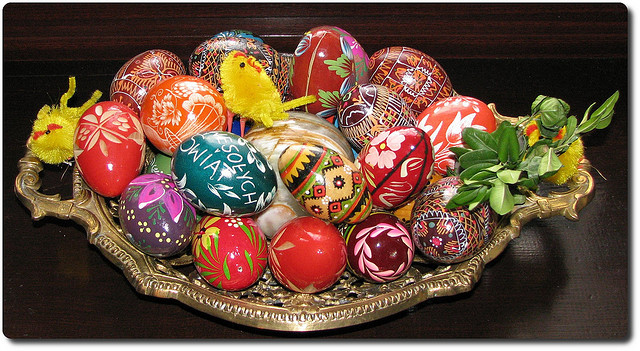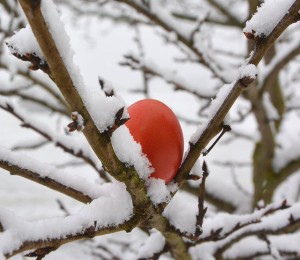For many who celebrate the holidays, Easter is already over. But for the Orthodox community, Easter observance doesn’t end until April 12. In fact, Easter is part of a nearly month-long celebration across dozens of cultures around the world.
When you think of Easter, you probably think of rabbits, colorful eggs and chocolate. But the holiday’s symbolism is actually closely aligned with death in many cultures. Easter is both a celebration of life and the renewal of spring, but it is also a remembrance of death.
Easter traditions are a hodgepodge of rituals taken from dozens of religions, many of which hold the end of winter as a significant time of the year.
Many Christians celebrate Easter to commemorate the legend of the crucifixion of Jesus Christ. Easter traditions are a hodgepodge of rituals taken from dozens of religions, many of which hold the end of winter as a significant time of the year. Our celebration of Easter in western culture takes small traditions from each of these original celebrations, ranging from Orthodox Christianity to Paganism.
One culture that celebrates Easter as a way to remember the death of Christ is the German Christian culture. Every Holy Thursday (before Easter Sunday), German Christians dye hardboiled eggs green. The green coloring is symbolism for the herbs Christ supposedly wore in a crown of thorns on his head while he was crucified.
Christians in Greece and some areas of the Middle East dye their eggs red traditionally to represent the blood of Christ. Egg dyeing as a whole is thought to have stemmed from this biblical representation, although the origins of the practice are still unclear, and possibly even older than the first written version of the Christian Bible.
Many Christians thought that wearing new clothes symbolized their new life as a mirror to the story of Christ’s emergence from death.
The tradition of buying new clothes to wear on Easter Sunday also came from the representation of Christ’s death. Many Christians thought that wearing new clothes symbolized their new life as a mirror to the story of Christ’s emergence from death.
The origins of some Easter traditions go even further back in history. Some historians think that the word Easter came from Eostre, who was the pagan goddess of fertility and spring. This folk tale is also tied in strongly with death symbolism. According to legend, Eostre saw a bird dying from the cold winter air, and she turned it into a rabbit so that its fur could protect it from the cold. The rabbit was a bird-hybrid that laid eggs, and some historians think this is why we use eggs as symbolism in our modern Easter celebrations.
Nearly all Easter celebrations balance the symbolism of life against the symbolism of death. On the one hand, Easter uses eggs, new clothing and the emergence of spring to represent fertility, renewal and life triumphing over death (winter). On the other hand, it gives people who celebrate it a reminder of the solemnity of death through its representation of the deaths of famous religious figures.
Historians still can’t agree where these celebrations originated, but the Easter holiday shows that nearly every culture contrasts life with death in their celebrations.

 Death Symbolism In Common Easter Traditions
Death Symbolism In Common Easter Traditions





 Forest Bathing Eases Grief by Soaking in Nature
Forest Bathing Eases Grief by Soaking in Nature

 Meaning-Focused Grief Therapy: Imaginal Dialogues with the Deceased
Meaning-Focused Grief Therapy: Imaginal Dialogues with the Deceased














